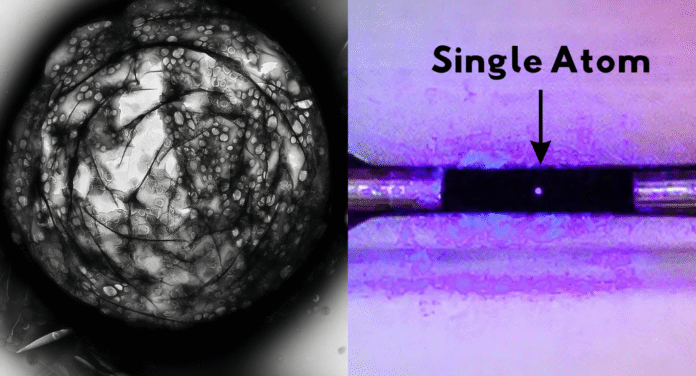First photo of a single atom was captured by a scientist, won the award at the engineering and physical sciences research council’s photography competition and changed the history of science just eight years ago.
Atoms contain protons and neutrons and are made of nuclei along with electrons orbiting around these nuclei. While neutrons have no charge, protons have a positive charge, and electrons have negative charges. Atoms are divided into groups according to their number of protons, which decides their chemical elements. There are more than a hundred types of chemical elements, ranging from hydrogen to oganesson. These elements get combined to create molecules.
Additionally, the study of atoms is crucial because atoms are the fundamental building blocks of matter. everything in the world is made of atoms, from air to huge galaxies. However, it is an actual challenge to study atoms because they are tiny and can measure only a few tenths of a nanometer in diameter. Scientists study atoms using electromagnetic fields.
But a long time ago, when scientists studied atoms in groups,. And here Physicist David Nadlinger from Oxford University captured the picture of a single strontium atom and made remarkable history.
To capture this picture, he first cooled down the atom to an extremely low temperature through a laser, then he trapped the place with magnetic fields and illuminated the atom with an ion beam, which made it visible. The atom in the picture appeared as a tiny and bright blue dot between two electrodes.
The original picture was black and white but later was colored to enhance the visibility of the strontium atom. Interestingly, the image actually does not show the atom’s nucleus; it was the electron cloud surrounding the nucleus.
Dr. Nadlinger chose strontium for the quantum physics experiment for many reasons. First of all, strontium is a common element, suitable for cooling experiments that need to trap single atoms by slowing their movements. Secondly, its multiple isotopes allow for comparative studies of quantum properties.
The picture won the EPSRC’s (Engineering and Physical Sciences Research Council) scientific photography competition and was well deserved. The people also praised the picture for its ability to capture the beauty of science and quantum physics and said it was an advancement in these fields. It starts a new era in the study of science and quantum physics.


